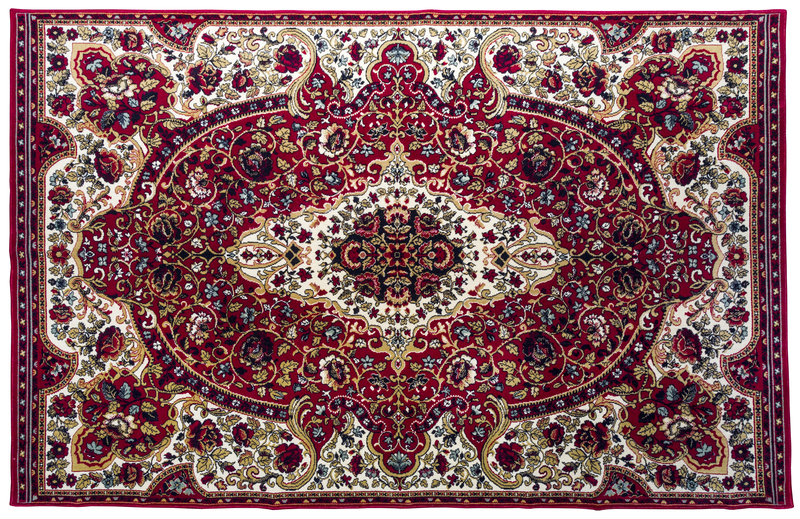Laminate Floor Cleaning Techniques
Laminate flooring has become increasingly popular in recent years due to its durability, aesthetic appeal, and cost-effectiveness. However, to maintain its pristine appearance and ensure its longevity, proper cleaning and maintenance are essential. In this article, we will explore various laminate floor cleaning techniques that will help you keep your floors looking their best.
The Importance of Regular Cleaning
Regular cleaning is crucial for laminate flooring, as dirt and debris can cause scratches and dullness over time. By incorporating a routine cleaning schedule, you can prevent the accumulation of dirt and keep your floors looking new.
1. Daily Sweep and Dust
Dust and dirt particles are inevitable, but they can be managed with daily sweeping or dusting. A soft-bristle broom or a microfiber dust mop is ideal for this task. These tools effectively capture dust and prevent it from settling into the floor's surface.
2. Vacuuming
If sweeping or dusting feels like too much of a chore, consider using a vacuum cleaner designed for hard floors. Ensure the vacuum has a setting that won't scratch the laminate surface. Avoid using a vacuum with a beater bar, as it can damage the flooring.

Suitable Cleaning Solutions
Choosing the right cleaning solutions for laminate floors is essential to avoid damage. Here are some safe options:
1. Homemade Cleaning Solutions
A mixture of water and vinegar is a popular homemade cleaning solution for laminate floors. Combine one cup of white vinegar with a gallon of warm water for an effective, eco-friendly cleaner. Vinegar is naturally acidic, helping to remove grime without leaving a residue.
2. Commercial Cleaners
There are numerous commercial cleaners designed specifically for laminate floors. When selecting a cleaner, look for products that are pH balanced and free of harsh chemicals. Always follow the manufacturer's instructions to ensure safe usage.
Mopping Techniques
Mopping is an integral part of laminate floor cleaning, but it must be done correctly to avoid damage. Here are some techniques to consider:
1. Damp Mopping
When mopping laminate floors, less is more. Excess water can seep into the seams and cause swelling or warping. Use a damp mop rather than a wet one and ensure all moisture is wiped up afterward.
2. Microfiber Mops
Microfiber mops are highly recommended for laminate flooring. They efficiently clean without leaving streaks or excess water behind. Additionally, microfiber materials are gentle on the surface, preventing scratches.
Spot Cleaning
Spills and stains are inevitable, but prompt attention can prevent long-term damage. Here are some spot-cleaning tips:
1. Blotting
When dealing with liquid spills, immediately blot the area with a clean, dry cloth. Avoid rubbing, as this can spread the liquid and push it deeper into the floor seams.
2. Mild Detergent
For stubborn stains, use a mild detergent mixed with water. Apply the solution to a cloth and gently scrub the affected area. Rinse with a damp cloth and dry thoroughly.
Preventive Measures
Preventing damage is just as important as cleaning. Here are some measures you can take:
1. Use Mats and Rugs
Place mats at entryways and rugs in high-traffic areas to reduce the amount of dirt and moisture that comes into contact with your laminate floors. Ensure rugs have a non-slip backing to prevent accidents.
2. Furniture Pads
Attach felt pads to the bottoms of furniture legs to prevent scratches when moving pieces. Regularly check and replace these pads as needed.
Common Mistakes to Avoid
Knowing what not to do is as important as knowing the correct techniques. Avoid these common mistakes:
1. Excessive Water
Using too much water can lead to swelling and warping. Always opt for damp, not wet, mopping.
2. Abrasive Cleaners
Abrasive cleaners and scrubbers can scratch the laminate surface. Stick to soft cloths, mops, and pH-neutral cleaners.
3. Wax and Polish
Never use wax or polish on laminate floors. These products can create a slippery surface and build up over time, dulling the floor's finish.
Dealing with Scratches and Scuffs
While laminate flooring is durable, it isn't immune to scratches and scuffs. Here are some ways to address these issues:
1. Laminate Floor Repair Kits
Many manufacturers offer repair kits that include putty, wax pencils, and touch-up markers. These kits are designed to match your floor's color and can effectively conceal minor scratches.
2. DIY Solutions
For small scratches, a DIY solution can work wonders. A mixture of baking soda and water can be used to create a paste. Apply the paste to the scratch, let it sit for a few minutes, and then gently buff it out with a soft cloth.

Maintaining Shine
A shiny laminate floor is a beautiful laminate floor. Here's how to maintain that shine:
1. Regular Buffing
Regularly buffing your laminate floors with a microfiber mop can help maintain their shine. Simply run the mop over the floor to pick up dust and restore gloss.
2. Polish Alternatives
While traditional polish is a no-go for laminate flooring, some manufacturers offer laminate-specific polishes. These products provide a shine boost without the risks associated with standard floor polishes.
Conclusion
Laminate flooring offers a combination of beauty and durability, making it a popular choice for many homeowners. By following these laminate floor cleaning techniques, you can ensure that your floors remain spotless and retain their new-like appearance for years to come. Regular sweeping, appropriate mopping, prompt spot cleaning, and preventive measures will go a long way in maintaining the integrity and aesthetics of your laminate flooring. Ultimately, understanding the right methods and products to use will save you time, effort, and money in the long run, allowing you to enjoy your beautiful floors without worry.



